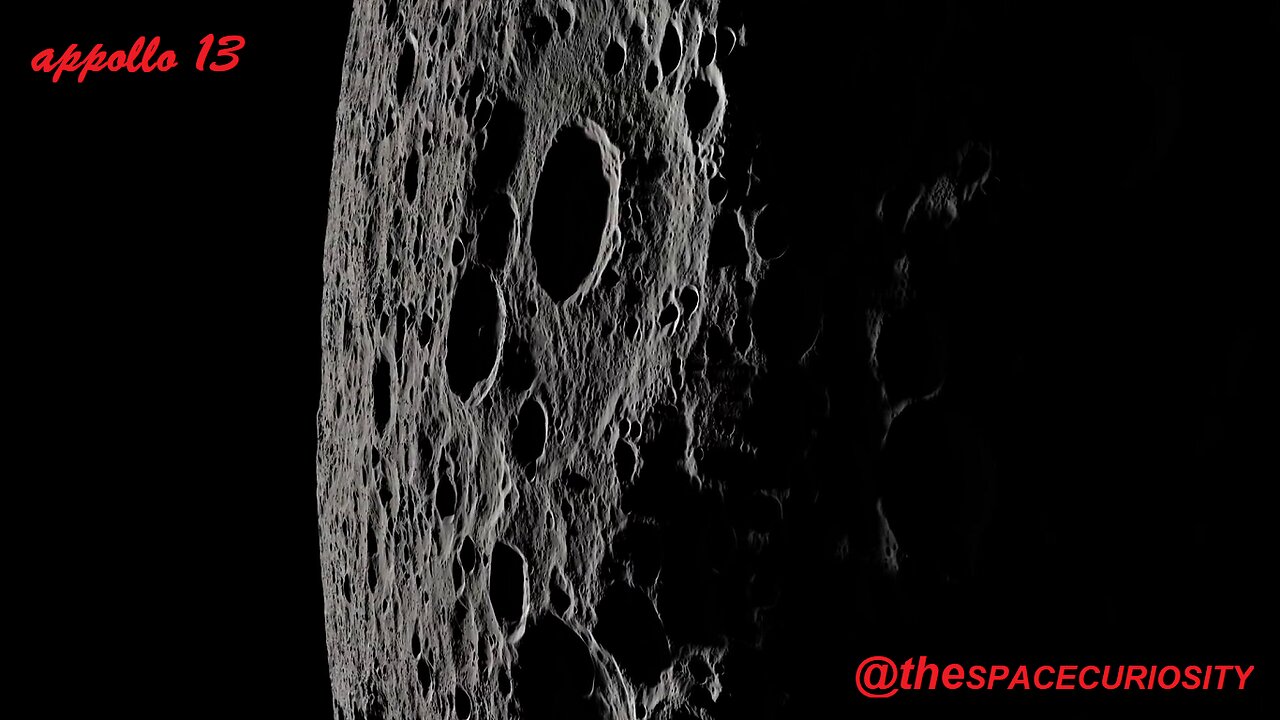Premium Only Content

Real Moon Safari View (Apollo-13)
DO FOLLOW FOR MORE
Apollo 13, the third mission intended to land astronauts on the Moon, is perhaps best remembered for the challenges it faced and the heroic efforts that brought the astronauts safely back to Earth. While Apollo 13 did not achieve its original goal of landing on the Moon due to a critical onboard explosion, the spacecraft did provide its crew with a unique and unforgettable view of the lunar surface.
As Apollo 13 swung around the Moon on its free-return trajectory, the astronauts had the opportunity to gaze upon the Moon's rugged, cratered landscape from a distance of around 158 miles (255 kilometers) above its surface. The command module, named "Odyssey," offered a panoramic window through which the crew members could take in the awe-inspiring view.
The lunar surface displayed a stark beauty, with contrasting dark maria (large flat plains formed by ancient lava flows) and bright, heavily cratered highlands. The Sun's light illuminated the landscape in such a way that shadows created a three-dimensional effect, emphasizing the Moon's varied topography. The astronauts could observe the pockmarked nature of the Moon, evidence of eons of impacts from asteroids and comets.
Apollo 13's mission may have been plagued by technical malfunctions and life-threatening challenges, but the brief moments when the astronauts beheld the Moon from their vantage point provided a perspective that few human beings have ever experienced. The experience underscored the fragility of our existence against the vast cosmic backdrop and left an indelible mark on the crew's memories.
While Apollo 13's lunar view did not result in the intended moonwalk, it contributed to our understanding of lunar geology and offered a profound reminder of the daring spirit of space exploration, as well as the resilience and resourcefulness of those who ventured beyond our planet's confines.
CREDIT: NASA
-
 3:14:33
3:14:33
Joe Donuts Gaming
11 hours ago🟢 Live : Christmas is Here!! | Fortnite, Caroling, Light Tours and Donos !!
45.9K12 -
 6:02:38
6:02:38
CLUJ
10 hours agoCHRISTMAS EVENING HYPE!! LETS HAVE FUN GAMING!!
42.1K7 -
![I AM FINALLY BACK :: PUBG: BATTLEGROUNDS :: RUMBLE NOW HAS GIFTED SUBS!!! [Merry Christmas] {18+}](https://1a-1791.com/video/fwe1/22/s8/1/e/f/C/6/efC6v.0kob-small-I-AM-FINALLY-BACK-PUBG-BATT.jpg) 9:57:19
9:57:19
a12cat34dog
12 hours agoI AM FINALLY BACK :: PUBG: BATTLEGROUNDS :: RUMBLE NOW HAS GIFTED SUBS!!! [Merry Christmas] {18+}
29.8K4 -
 3:55:42
3:55:42
STARM1X16
12 hours agoMerry Christmas Fortnite
91K10 -
 2:45:33
2:45:33
Sgtfinesse
12 hours agoMerry Christmas Night
71.1K19 -
 3:51:18
3:51:18
tacetmort3m
1 day ago🔴 LIVE - (MERRY CHRISTMAS) TIME TO SPREAD DEMOCRACY - HELLDIVERS 2 OMENS OF TYRANNY
41.2K2 -
 2:46
2:46
BIG NEM
15 hours agoDiscovering RAKIJA: The Holy Liquer of the Balkans
29.2K2 -
 1:11:38
1:11:38
Film Threat
20 hours agoCHRISTMAS DAY CHILL STREAM WITH CHRIS GORE | Hollywood on the Rocks
148K33 -
 14:22:40
14:22:40
The Quartering
1 day agoYule Log Christmas MAGA Edition With Memes! Come Hang Out!
236K32 -
 38:41
38:41
MYLUNCHBREAK CHANNEL PAGE
1 day agoTimeline Begins in 1800? - Pt 1 & 2
115K71